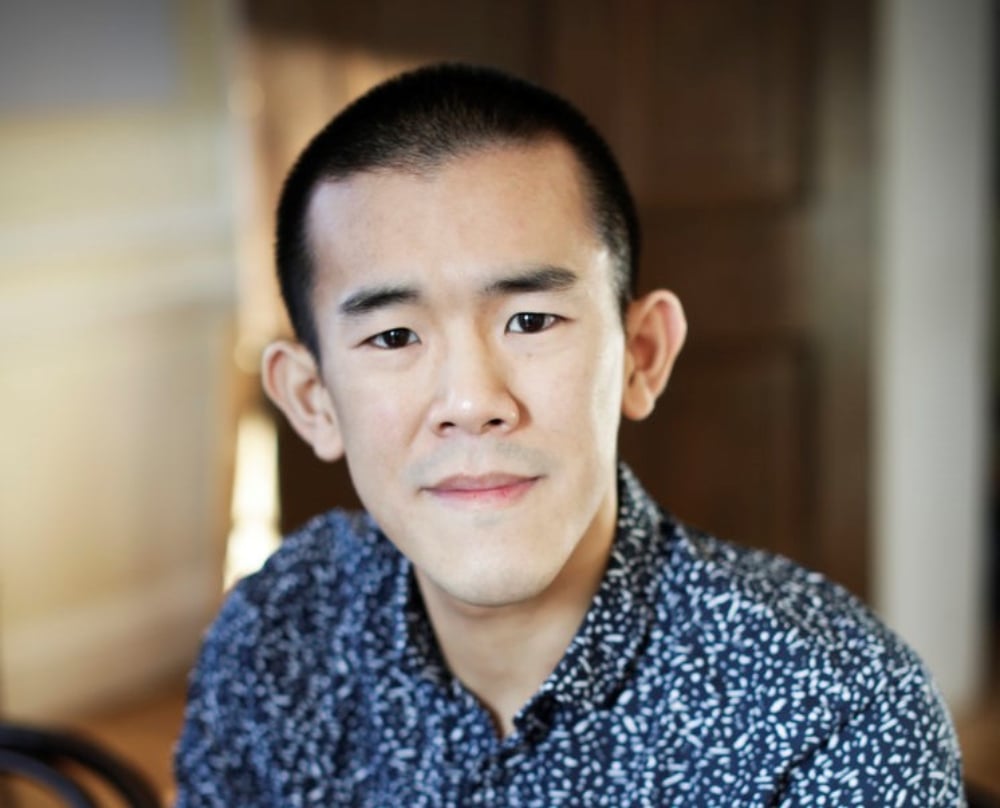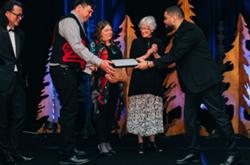I first discovered Ed Yong’s work in 2016 upon the release of his first book, I Contain Multitudes: The Microbes Within Us and a Grander View of Life. The title, taken from a Walt Whitman poem, refers to the fascinating relationship that exists between animals and humans and the microbes that inhabit us — on our skin, in our guts and in the world around us.
As a devout fiction and personal non-fiction reader, I’d never really been drawn to science books. But Yong’s approach to science writing hooked me in from the start. It was clear, accessible and lyrical, and his boundless curiosity and enthusiasm for the natural world felt — to use a now painfully apt metaphor — infectious. I came away from I Contain Multitudes with a newfound reverence for the bacteria and other living organisms that have helped shape human life across millennia.
In the intervening years, Yong has become somewhat of a household name in science journalism. But not for his writing about the natural sciences so much as for his work on a topic that veers into social science: his COVID-19 pandemic coverage for the Atlantic, where he has been a staff writer since 2015.
In 2018, Yong penned a now famous 8,000-word feature titled, “When the Next Plague Hits,” which ran in the magazine’s summer issue. The piece, compiled to mark the centennial of the 1918 Spanish flu pandemic, saw Yong travel to the Congo to investigate the emergence of Ebola there some 45 years ago and to understand how it eventually created an epidemic that brought West Africa to its knees in 2014.
In the article, which goes on to detail the emergence of other global viruses such as HIV and H1N1, Yong explores the possibility — really a probability — that the U.S. and the rest of the world could face a new pandemic of devastating proportions in the coming years.
He was, of course, correct.
“I have mixed feelings about it,” Yong tells me via Zoom from his Washington, D.C. home. “On the one hand, I feel a little vindicated. The premise of that piece was that we were not prepared for a pandemic... and we were not prepared for a pandemic.”
But he says he takes little joy in having been right about that. “I don’t get points for calling this thing that has harmed and hurt so many of us,” he says.
In early 2020, while Yong was on book leave, his editors at the Atlantic asked him to return to cover the emergence of a novel coronavirus that seemed posed to fulfil his 2018 prophecy.
He did, and for the last two years has tirelessly dedicated himself to providing lucid, prescient and critical reporting on COVID-19 and its impacts for a global readership. His writing about the pandemic has touched on everything from the science of COVID transmission and how the immune system responds to infection, to pandemic expert burnout and the crisis facing health-care workers. He was one of the first journalists to cover the phenomenon we now know as long COVID, and he’s written extensively — and terrifyingly — about a looming second pandemic.
His coverage of COVID-19 won several awards in 2020, including the George Polk Award for science reporting; the Victor Cohn Prize for medical science reporting, the Neil and Susan Sheehan Award for investigative journalism; the John P. McGovern Award from the American Medical Writers Association; and the AAAS Kavli Science Journalism Award for in-depth reporting. Last year, he won the 2021 Pulitzer Prize in Explanatory Reporting for his pandemic work.
When I spoke with Yong last week, he was preparing to launch his second book, An Immense World: How Animal Senses Reveal the Hidden Realms Around Us, which he wrapped up while fulfilling his Atlantic duties early last year. He says that writing it provided a welcome reprieve from the realities of covering the pandemic day in and day out.
“After nine months of reporting on COVID, the prospect of having to write half a book in four months actually felt a bit like a trip to the spa,” he says.
“It felt rejuvenating and joyful. The topic of the book is inherently joyful. It’s about wonder and the incredible, awe-inspiring side to nature. I think that provided a much-needed respite from this period of bleakness in which nature is very much kicking our ass.”
Yong and I spoke about the book, his pandemic portfolio, the art of science journalism and what he has taken away from two years of writing about COVID-19. This interview has been lightly edited for length and clarity.
Paloma Pacheco: Tell me about your new book.
Ed Yong: The book is called An Immense World. It’s about the sensory worlds of other animals. Every species, whether it’s a human, a dog, a bat, or a spider, experiences the same shared reality in a completely different way. So we all see, smell, feel and hear in very different ways. It means that you could be sharing a room with a menagerie of other creatures and you would all be perceiving what’s in that same space completely differently.
I find that really fascinating. I think there’s something beautiful and magical about knowing that the reality we’re familiar with is only a very thin sliver of all there is to experience. Thinking about the senses of other animals helps you to think about what might be mundane and everyday in a completely new and exciting way. So the book is about that: it’s about all the other creatures that share this planet and the weird, wacky and wonderful ways in which they perceive the reality around them.
Having a background in biology and writing about the natural world, what was it like shifting your focus to COVID coverage in 2020?
Instructive. I’d previously covered a wide range of different scientific topics — everything from infectious diseases, which is obviously very relevant, to animal behaviour, which is what the book is about. I’m wide-ranging and voracious in my interests and the type of things I focus on in my work. I had written about pandemics before — several times over at the Atlantic — before COVID happened. I think what COVID did was to make it very clear that focusing entirely on science in an attempt to cover the pandemic was going to be the wrong approach. Science is obviously very much a part of the story; you need to understand things like virology and epidemiology to understand the nature of the pandemic. But you also very much need to understand topics relevant to the humanities and the social sciences.
I’ve tried to talk to anthropologists, sociologists and historians — scholars of things like disability and the health-care system. The pandemic is such a wide-ranging crisis that touches on so many aspects of our lives, that I think just looking at it through a science lens would be at best incomplete and at worst misleading. So that’s been a stretch for me — something new and something I’ve very much enjoyed coming to.
What are some of the challenges that you’ve run into in covering the pandemic from that wide-ranging perspective, and also in breaking down some of these more complex topics for a lay audience?
I said that it’s a broad-ranging crisis and I think that is the biggest challenge. It’s not a simple matter. The pandemic is like a jigsaw puzzle with a thousand different pieces. Assembling those to create something coherent for our readers is really hard. I think so much of journalism ends up being quite fragmentary. Usually, you look at one of those pieces at a time and you show readers what that’s like. That can work under normal circumstances, but I think in the context of the pandemic it can often be very confusing.
The work that my colleagues and I at the Atlantic have been trying to do is to sort of synthesize those pieces for our readers — to piece them together and to show people this cohesive and coherent picture of what’s happening around us. That is hard to do in real-time, when we are obviously being affected by the pandemic ourselves. I’ve gone through the same mental and emotional challenges that a lot of other folks have gone through, and to wrangle with those while also trying to make sense of this event that often defies sense is very hard. That has been consistently challenging from the start and it doesn’t get any less challenging as the pandemic goes on.
How have you determined what you will write about in your pandemic coverage? What does your web of sources, data and story ideas look like?
Certainly in the first year of the pandemic what we really tried to do was to answer the big questions that we thought people were asking, but maybe hadn’t even realized they were asking.
So the first big piece was, “How The Pandemic Will End,” and then I wrote pieces about why it’s all so confusing, about why we seem to be stuck in a rut and how it has all come to this. Those animating questions gave me a framework for tackling a lot of detail and a lot of the other areas we’ve talked about. So there’s been that.
I’ve also tried to do pieces that focus on aspects of the pandemic that are not being widely covered, especially areas that are relevant to groups that may be underrepresented in the media. I’ve done a lot of work on longhaulers, people with long COVID, [and] these persistent, debilitating symptoms that can follow even a mild COVID infection.
More recently, I’ve been doing a lot of pieces on the hospital crisis and health-care workers. While it might seem a bit strange to describe them as an underrepresented group, given how much rhetoric there was around “health-care heroes” at the start of the pandemic, I do think they especially qualify now. There’s such a strong impetus to return to normal and such a strong desire to believe that the worst of the pandemic is past, that I think a lot of us — people and the media — are looking past the truly dire state of our hospitals right now. The health-care system is crumbling and has been throughout the pandemic, especially so during this [latest] surge. A lot of health-care workers feel ignored by the broader narratives around the pandemic.
There are a lot of stories to write. There’s always a lot of different possible angles and there’s never enough time. But we do what we can, and we try to do the kinds of stories that hopefully matter.
I think there’s still a lingering belief that science is quite dry and inaccessible. In your writing, as you said, you’ve worked to make it digestible to a wide readership, but you also seem concerned with language and style, as well as having a broad knowledge base to draw from so that science is not just about data and numbers. Can you tell me about that? What is the art of science writing to you?
You’re right that there is this misconception, I think, about science being dry and opaque and hard to get into. And I feel sometimes that misconception is prominent even among people who work in science writing, and I think that can lead us into unhelpful territory. A lot of people feel compelled to overhype the relevance of science to people’s lives, or the practical significance of a particular discovery. I find the joy in science writing lies in just knowing more about the world around us. It’s about these visceral and fundamental qualities of curiosity, awe and wonder that just pervade the natural world.
I start from the perspective that the world is interesting and full of wonder, and I can convey that to my readers. I think starting from that place gives you a better foundation. I’m not writing on defence; I’m not assuming that I need to break through some imagined barrier. My premise is very simple: I find this really interesting, and if I can convey that adequately, I can make you think it’s interesting, too. I think that’s just how we interact as people. That’s why I wrote this book. The senses of other animals are, I think, phenomenally interesting — maybe something we don’t think about, but I bet I can make you think about it, and I bet I can make you care.
I have to ask you about the 2018 article “When the Next Plague Hits.” I’m sure you’ve been asked about this a lot already, but what does it feel like for you to look back on that story with the hindsight of 2022?
I have mixed feelings about it. On the one hand, I feel a little vindicated. The premise of that piece was that we were not prepared for a pandemic... and we were not prepared for a pandemic. I take very little joy in being right about that. I think there’s sometimes this kind of unsavoury “I predicted this about the pandemic” type of thing, and no one cares. I don’t get points for calling this thing that has harmed and hurt so many of us.
I think that it’s interesting looking back on that piece and seeing the bits that were correct and also the holes. In the main, almost everything I wrote in that piece was correct. It bore out. The weaknesses in the system that I pointed to are the weaknesses that we’ve seen in the last two years.
But there were also things that I didn’t talk about in that piece, which are glaring to me in hindsight. There’s no mention of the role that inequalities would play in shaping how well a country would do in a given pandemic. There is no talk of the role of misinformation, or the role of our social media platforms in disseminating that misinformation. There’s much less of the social science focus that we’ve talked about in this interview. I would consider that piece to be very reflective of how people thought about pandemic preparedness and how many people still do. In terms of biomedical staff, public health... all those important things.
But I don’t think pandemics are defeated through vaccination alone. It’s not just a biomedical problem. It’s fundamentally a social and political one. And I don’t think the 2018 piece really grapples with that to the extent that it needed to. So with the benefit of two years of hindsight now, it’s interesting to see what I would do differently and what I have done differently over the past two years. There’s nothing I wrote in that piece that I’m embarrassed about, but there are definitely holes that I can see in retrospect.
You’ve spoken to countless people for your work — scientists and public-health experts, doctors and health-care workers, COVID longhaulers. Since you began this coverage two years ago, what are some of the most enduring lessons that have remained with you from these conversations and from your reporting?
I’m really struck by the reporting I’ve done on longhaulers. I think that has really broadened and changed my understanding of what it’s like to deal with chronic diseases, and how neglected a lot of such diseases have been by the medical establishment. I hadn’t ever written about things like dysautonomia or ME [myalgic encephalomyelitis, also called chronic fatigue syndrome] before this pandemic happened, and now I don’t think I’ll ever not think about them.
There’s a large group of people who have been repeatedly dismissed, ignored, felt gaslit and who have suffered as a result. I think if we had not done that as a society, we would have been in a much better position when COVID happened. I think we would have had more answers for people who are now suffering through long COVID. That sticks in my mind a lot. And just how hard a lot of folks with long COVID have had it — how much they’ve suffered and how much they’ve experienced those same kinds of dismissal. That’s hard to see and is, again, something that I don’t think I will forget anytime soon.
Can I ask you one more question? What does 2022 hold for us and for you as a journalist?
Oh man. Well, I think it’s a bit of a fool’s game to predict what the pandemic is going to do. I think that, on the one hand, a lot of people have now seen the virus or been vaccinated, so I would expect immunity in the population to be reasonably high. That said, reinfections can happen, more variants could arise.
I don’t know whether to predict whether this will be the final surge, as some people seem hellbent on claiming, or whether there’s more in our future. I do know that there will be more epidemics and more pandemics in our future, and that we still need to make the effort to try and build a society that can handle that. I don’t think we’re doing that now, which worries me. My main concern is that if we get back to a steadier and calmer place, that people will have forgotten the lessons of the last two years and will make very little effort to steel ourselves societally for what might happen in the future. So that’s my concern.
My priorities as a journalist are to try and show the stories of the people who will get left behind when the rest of society moves on from the pandemic. And I also very much want to talk about my book, which I hope will give people a little bit of joy and something happier to think about. Because it’s been a bleak couple of years, and I think we could all use a little bit more joy right now.
Hear Ed Yong speak on 'The Art of Science Journalism' at UBC’s School of Public Policy and Global Affairs on April 19. Yong’s new book, 'An Immense World: How Animal Senses Reveal the Hidden Realms Around Us,' will be released by Penguin Random House Canada on July 12. ![]()
Read more: Coronavirus, Media, Science + Tech

















Tyee Commenting Guidelines
Comments that violate guidelines risk being deleted, and violations may result in a temporary or permanent user ban. Maintain the spirit of good conversation to stay in the discussion.
*Please note The Tyee is not a forum for spreading misinformation about COVID-19, denying its existence or minimizing its risk to public health.
Do:
Do not: